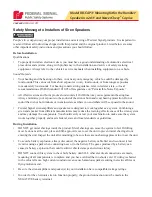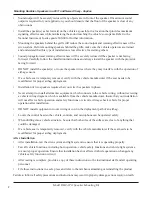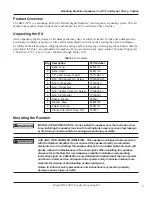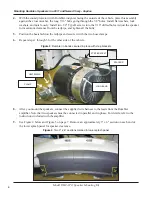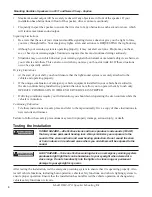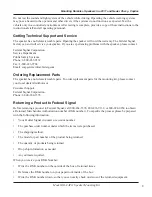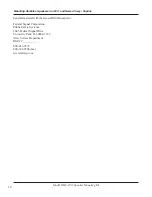
Mounting Rumbler
®
Speakers in a 2011 and Newer Chevy
®
Caprice
7
Model RB-CAP11 Speaker Mounting Kit
10.
Test the speakers for proper operation as well as the emergency warning system to ensure that it is
operating properly. See the next two sections for warnings and instructions.
12.
Reassemble the vehicle.
Figure 5
Rumbler seen from bottom protruding through lower splash guard
Safety Message to Operators of Federal Signal Electronic Sirens
and Light/Sound Systems
The lives of people depend on your safe operation of Federal Signal products. It is important to read and
follow all instructions shipped with the products. In addition, listed below are some other important safety
instructions and precautions you should follow:
Qualifications
•
To properly use an electronic siren and speaker(s), you must have a good understanding of general
vehicle operation, a high proficiency in the use of safety warning equipment, and thorough knowledge of
state and federal UNIFORM TRAFFIC CODES.
Sound Hazards
•
Your hearing and the hearing of others, in or close to your emergency vehicle, could be damaged
by loud sounds. This can occur from short exposures to very loud sounds, or from longer exposures
to moderately loud sounds. For hearing conservation guidance, refer to federal, state, or local
recommendations. OSHA Standard 1910.95 offers guidance on “Permissible Noise Exposure.”
•
All effective sirens and horns produce loud sounds (120 dB) that may cause permanent hearing loss.
Always minimize your exposure to siren sound, roll up your windows and wear hearing protection. Do
not sound the siren indoors or in enclosed areas where you and others will be exposed to the sound.
Only use the siren for emergency response situations.
Sound Limitations
•
Before using the vehicle, check to see if the siren speakers are concealed from view. If the siren speaker
is not in clear view on the front of the vehicle, use extra caution when operating the vehicle. A concealed
siren speaker installation is less effective at warning others.

